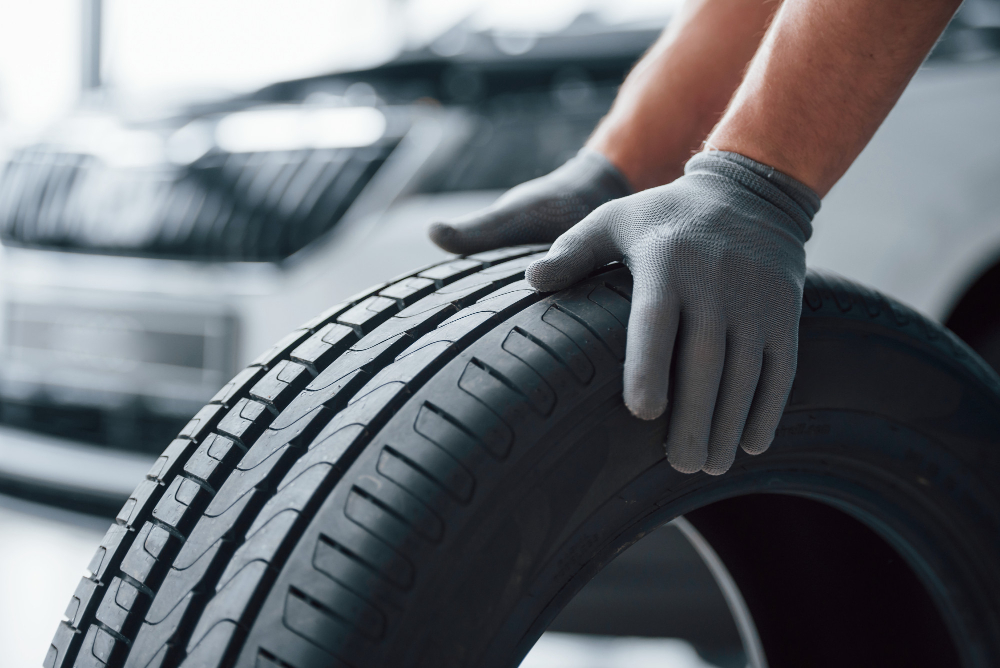Driving intertwines with daily life. From daily commutes, adventurous road trips, to errand runs, the integrity of your ride is paramount. An often-underestimated pillar of vehicular safety is the right tyre fitting. Those rubber rings under your car are more pivotal than they appear, influencing your road safety substantially. Let’s steer into the tyre terrain in this piece and discern why the right fitment is a game-changer for safe drives.
Contents
The Importance of Proper Tyre Fitting
Now that we’ve covered the basics of tyres, let’s dive into why proper tyre fitting is crucial for your safety on the road.
Improved Handling and Stability
Properly fitted tyres ensure that your vehicle handles and steers correctly. When tyres are balanced and aligned correctly, you’ll experience better control over your car, especially when navigating corners or making sudden maneuvers. This enhanced handling can be a lifesaver in emergency situations.
Enhanced Braking Performance
Braking is one of the most critical aspects of road safety. When your tyres are correctly fitted and in good condition, they can provide optimal grip on the road, allowing your brakes to work efficiently. Improperly fitted or worn-out tyres can result in longer stopping distances, increasing the risk of rear-end collisions.
Improved Fuel Efficiency
Believe it or not, proper tyre fitting can also impact your fuel efficiency. When your tyres are correctly inflated and aligned, there is less rolling resistance. This means your engine doesn’t have to work as hard to move your vehicle, resulting in better gas mileage. Not only does this save you money at the pump, but it also reduces your carbon footprint.
Reduced Risk of Blowouts
A blowout is a driver’s worst nightmare. It can happen suddenly and lead to a loss of control over the vehicle. Properly fitted tyres are less likely to experience blowouts. Ensuring that your tyres are correctly aligned and balanced reduces the strain on them and minimizes the risk of sudden tyre failure.
Even Tread Wear
Uneven tread wear is a common issue when tyres are not correctly fitted or maintained. This can lead to poor handling and reduced traction. Proper tyre fitting and regular maintenance can help ensure even tread wear, extending the life of your tyres and keeping you safer on the road.
How to Ensure Proper Tyre Fitting
Now that we understand the importance of proper tyre fitting and the risks associated with improper fitting, let’s explore how you can ensure that your tyres are fitted correctly.
Choose the Right Tyres
Start by choosing the right tyres for your vehicle and driving conditions. Consider factors like tyre size, type, and load capacity. Consult your vehicle’s manual or seek advice from a professional to make an informed decision.
Visit a Qualified Tyre Technician
When it’s time to fit or replace your tyres, always visit a qualified tyre technician or a reputable tyre shop. These professionals have the knowledge and equipment needed to ensure your tyres are correctly balanced, aligned, and fitted.
Regularly Inspect Your Tyres
Make it a habit to inspect your tyres regularly. Check for signs of wear and tear, such as cracks, bulges, or punctures.
Balance and Alignment
Proper tyre balance and alignment are key to safe and efficient driving. Tyre balancing involves adding weights to the wheel to ensure even weight distribution, while wheel alignment ensures that your tyres are properly positioned relative to each other and to your vehicle. These services should be performed by professionals using specialized equipment.
DIY Tyre Safety Checks
While it’s essential to rely on professionals for tyre fitting and maintenance, there are some simple DIY checks you can perform to ensure your tyres are in good shape between service appointments.
Visual Inspection
Regularly inspect your tyres for any visible signs of damage, such as cuts, bulges, or punctures. Look for foreign objects like nails or screws that might be embedded in the tread. If you spot any issues, consult a tyre professional for guidance on whether repairs or replacements are necessary.
Tread Depth
Tread depth is crucial for maintaining grip on the road, especially in wet or slippery conditions. You can perform a quick DIY check using a tread depth gauge or even a coin. Insert a coin into the tread with the Queen’s head facing down. If the tread doesn’t cover the top of her head, it’s time to replace your tyres.
Tyre Pressure
Regularly check your tyre pressure with a reliable tyre pressure gauge. It’s a straightforward task that can have a significant impact on safety and fuel efficiency. Make sure to do this when the tyres are cold, as driving can heat up the air inside and give inaccurate readings.
Spare Tyre
Don’t forget about your spare tyre! Ensure that it’s in good condition and properly inflated. It won’t help you in an emergency if it’s flat or damaged.
Conclusion
Your safety on the road should always be a top priority. Proper tyre fitting is a fundamental aspect of vehicle safety that cannot be overlooked. Tyres are the only point of contact between your vehicle and the road, and they play a crucial role in handling, braking, and overall performance.
By choosing the right tyres, visiting qualified tyre technicians for fitting and maintenance, and performing regular DIY checks, you can significantly reduce the risks associated with improper tyre fitting. You’ll enjoy improved handling, better braking performance, increased fuel efficiency, and a reduced risk of accidents.

